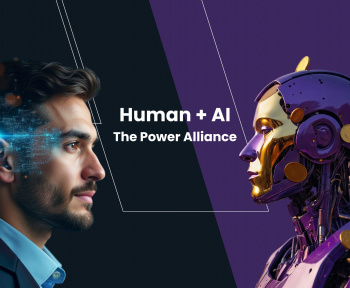Over the past decade, the financial services sector has evolved tremendously, thanks to developments such as access to smartphones, internet penetration, simpler digital payments, data sharing, financial inclusion initiatives, and the rise of FinTechs. One resulting trend is the advent of new lending models that didn’t exist earlier. For instance, a person seeking a loan to pay for an expensive artifact displayed at a store, which is accidentally broken, funding for family vacations, and loan for luxury purchases through personal loans or Buy Now Pay Later (BNPL) offerings.
When lending is moving on a fast track, collections can’t lag behind
With lending moving into the instant mode, digital format, and fast gear, the traditional, manual, and slow approach to loan collections is simply not viable. There is a growing realization in the industry about the importance of upgrading and rebooting debt collections with a transformative approach. A survey of 30 CROs and CXOs from the banking and financial services industry revealed that 65% considered collections among the top three priority areas that they need to build upon over the next two years.
Relying on hostile recovery agents whose go-to approach is to harass / threaten borrowers through persistent calls and repeated messages is not aligned with providing superior customer experience.
Collections need to keep pace with evolving compliance needs
Regulators across the globe are putting in place codes of conduct for digital lending, collections practices, and safeguarding the interests of borrowers. In some countries, unsolicited field visits for collections are not allowed. Banks and financial institutions must take customers’ appointments before knocking on borrowers’ doors. This requires a complete realignment of debt collection processes that were acceptable and in compliance yesterday but might turn irrelevant today. The need to implement robust checks and balances that don’t allow even a slight error either by a human operator or machine is evident. This can be easily attained by comprehensive debt collections technology platforms that are modern, comprehensive, and agile.
Digitization in loan collections is no longer optional
With the borrowers getting digitally savvy, banks and other financial institutions have realized the importance of engaging them digitally. Digital nudges, timely reminders, and easy payment methods are more effective in collections than mindless and repetitive follow-ups. With the proliferation of smartphones and app-based finance, a robust self-servicing capability in collections is a necessity. There are multiple modes of reaching customers including chatbots, voicebots, WhatsApp, IVR, SMS, and emails, besides field collections. It is important to assess the applicability and potential of each channel for a specific set of borrowers while crafting tailored collections strategies. A combination of these channels with apt messaging, frequency, and moderation can deliver remarkable results.
As lending volumes increase and instant loans with smaller ticket sizes grow, bringing down the cost of collections becomes a key priority. Digitization is the only way to achieve this at scale. The pandemic helped accelerate the pace of digitization, but also exposed the gaps in debt collection operations.
Banks and non-banking lending companies are now increasingly investing in developing models for digital collections, automated communications, cloud-based telephony, predictive analytics, and cashless collections without touching or ringing a bell. Enabling these requires the adoption of innovative debt collections software platforms and multi-channel integrated communications approaches across the borrower’s collections lifecycle.
Using data for insights-driven decision-making in collections
Advanced debt collections software that harnesses the power of analytics can unlock the potential of AI and ML for segmentation, deep behavioral analysis, predictive models, and relevant strategies. The accurate data-based insights can also help identify early warning signals for possible delinquencies and defaults. The ability to predict that someone might miss payments can help build customized solutions that can be extremely helpful for lenders.
With automation in collections enabled by sophisticated workflows, multi-lingual conversational AI bots, and multi-step engagement journeys, banks can reach out to customers, streamline payments and automate reminder communications without any human intervention. For instance, automated voice calls or text messages with online payment links can help borrowers navigate online money transfers without compromising their dignity. Over time, these nudges can help bring positive behavioral changes in the customer base, encouraging them to pay on time.
Even for the collections operations teams, insights help assess the performance of different strategies and channels in real-time leading to suitable corrective actions. The data-backed intelligence not only ensures focused actions with better outcomes but also optimizes the cost associated with a generalist approach.
Digital transformation and leveraging of data has helped lenders reimagine debt collections processes, discover more effective ways to engage with borrowers, and comply with rapidly changing regulatory requirements. The time to harness the true potential of digital and data in debt collections is here with early starters already having an advantage.
To explore the future of debt collections, visit us at Credgenics





